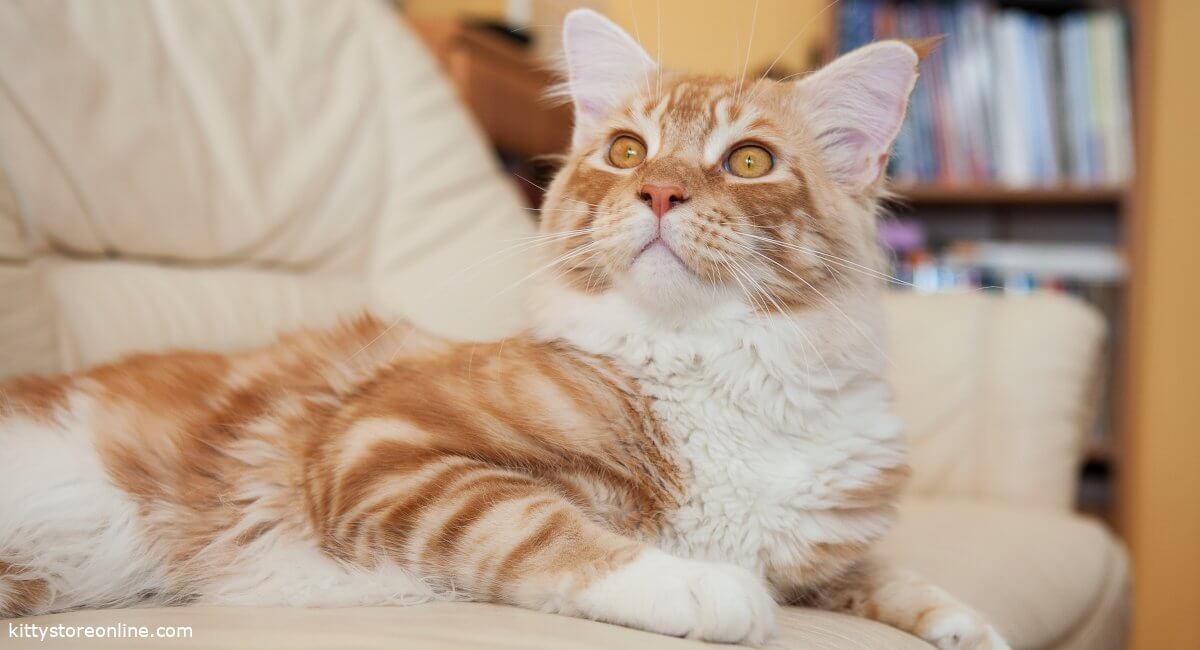Do you always know what your cat wants to tell you? Because besides meowing, there are many signals that the cat emits to communicate with its human. By the way, the meow is reserved only for humans.
Cats among themselves do not meow at each other. Only baby cats meow. Meowing can mean anything. It can mean: “I am hungry” or “Play with me” or “Let me in”. So you have to watch your cat carefully if you want to find out the meaning of the meow. But it is certain that meow in all its shades and pitches is always related to a need of the cat. When cats want something from their human, they produce a pleading purr. This is a combination between purring and meowing.
Correctly interpret cat language
- Purring: When a cat purrs, it feels good all around. The sound is an expression of the highest satisfaction. Cats can purr all the time. When breathing in, when breathing out, when dozing and even when eating. The cat is satisfied with itself and the environment. In some situations, the cat soothes itself by purring. Beispielsweise schnurren manche Katzen beim Tierarzt so laut, dass dieser die Herztöne nicht mehr abhören kann. Purring in the frequency between 27 and 44 hertz has a healing effect on injuries. Whether the cat heals itself with it or would like to do something good to her human, depends on the respective situation.
- Hissing: Hissing is a defensive and threatening gesture, whether it is people or other animals. The cat shows its teeth with an open mouth and thus already appears fearsome. If the hissing does not show the desired effect, the cat has other sounds in its repertoire.
- Growl: If a cat growls, it is a clear warning. This far and no further. The growl may be followed by a rumble, but it does not have to be. If the attacker does not retreat immediately, the cat will defend itself.
- Spitting: The cat jumps forward like lightning and spits at the opponent.
- Screech: The cat is in the greatest distress. In many cases, an inferior rival screeches in battle before giving up.
- Chatter: Apartment cats in particular sit by the window and chatter excitedly when unreachable prey appears outside. At the same time, the cat’s posture from head to tail tip is totally tense with excitement.
- Cooing: The mother cat welcomes the kittens with cooing sounds when she returns to the nest after an absence. Male cats ensnare their chosen one with affectionate cooing. Cooing can also be used as a greeting to humans and conspecifics.
Mature males have another special song ready. They scream like a baby during arguments with other males. The loud singing can last up to half an hour or until the other rival vacates the field.
The body language of cats
A tucked tail, a crouched posture and tucked ears are a sign that the cat is afraid. However, fear can also be expressed by a cat hunchback, a ruffled coat including a bouffant tail and tucked ears. The cat wants to appear larger in front of an opponent. With fluffed up bottle brush tail it places itself thereby crosswise to the opponent. If the cat’s tail twitches only occasionally, the cat is slightly tense. If, on the other hand, the tail flicks back and forth quickly, then the cat is very excited and under great tension. This does not always have to be negative. For example, the cat can send these signals in joyful anticipation of food or a game.
If, on the other hand, the cat holds up its tail with the tip curled like a flag, it is signaling joy or wants to greet you. A ruffled coat does not always indicate aggression in a cat. Also frightened cats puff up their fur. However, they pinch their tail between the hind legs and the pupils are strongly dilated. If frightened cats feel cornered, they may well attack. This is also true if the cat is lying on the ground with its rear end and tail up.
On the other hand, if the cat slaps its tail on the floor, it might be in pain. If, on the other hand, the cat’s tail vibrates, then it is in joyful anticipation of a treat or it is looking forward to being stroked.
With ears forward and eyes wide open, the cat is set to hunt or play with cat toys. If, on the other hand, the eyes are wide open and the ears are against the head, then the cat is either afraid or thinking.
Misunderstood
If the cat is relaxed, then this is shown by a relaxed posture. The tail hangs loosely, the paws and the ears twitch occasionally and the eyes are squinted. Cats therefore interpret narrowed eyes in humans as “he likes me”. This leads to a misunderstanding when some people who do not like cats squint their eyes.
Change of mood with the cat
One moment tolerating petting with a pleasant purr, and the next moment the claws are out: That’s how it is for many cat owners. You just didn’t pay proper attention. You missed the moment when your cat’s purrs stopped and its paws moved. The cat wanted to say: “That’s enough. I don’t want to be petted anymore, I just want to lie here”. Then wait until the cat is in a better mood again before you continue to pet it.
The friendly cat
In many cases, cats rub their noses against people’s skin, face or clothing. This is a friendly behavior. The cat marks the people with its own scent.
